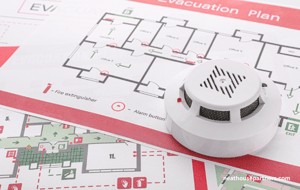Health & Safety Training For Remote Workers
Health & Safety Training For Remote Workers
James Rowland
Commercial Director James leads Account Management, Sales and Marketing at Neathouse Partners.Date
03 May 2023Updated
10 April 2024
Table of contents
Related articles
Tags
The COVID-19 pandemic has transformed the way we work, with many employees now working remotely from their homes.
As a result, employers have had to rethink their approach to health and safety training to ensure that their remote workers are adequately trained on how to keep themselves safe while working from home.
Read on for best practice tips and new approaches to training the remote workforce that you might not have considered for keeping your employees safe, healthy and injury free.
The Importance Of H&S Training For Remote Workers
Unlike in a traditional workplace, remote workers have to create their working environment, which may not be ergonomically designed or equipped with the necessary safety equipment.
Remote workers may have to manage their workload, which can lead to stress and burnout.
Providing proper health and safety training can help remote workers identify and address potential hazards, manage their workload effectively, and maintain their physical and mental health.
By investing in health and safety training for remote workers, employers can ensure that their employees are safe and healthy while working from home, leading to increased productivity and overall job satisfaction.
Further reading: 6 Steps Staff Should Follow After An Accident At Work
Training Methods For Remote Workers
Long gone are the days of training rooms and presentations.
Employers can now use a range of training methods to ensure that their remote workers are equipped with the necessary skills and knowledge to work safely from home.
E-Learning
One of the most popular approaches to health and safety training for remote workers is e-learning.
This method of training allows employees to access health and safety training materials online at their own pace and at a time that suits them.
E-learning can be delivered via webinars, videos, and online courses, making it an accessible and flexible approach to health and safety training.
Gamification
Gamification involves the use of games to teach employees about health and safety.
This approach can be particularly effective for younger employees who may be more engaged by interactive and immersive learning methods.
Virtual Reality
Virtual reality (VR) is another approach that has gained popularity in recent years.
VR allows employees to experience hazardous situations in a controlled environment, providing a more realistic and engaging training experience.
Social learning
Social learning is a popular approach to health and safety training for remote workers.
This method involves the use of social media platforms, such as LinkedIn or Twitter, to share information and best practices with employees.
Social learning encourages employees to share their experiences and learn from one another, creating a collaborative and supportive learning environment.
The Challenges of Health and Safety Training for Remote Workers
While traditional training methods may have been effective for on-site employees, remote workers have unique needs that must be addressed to ensure their health and safety.
- One of the biggest challenges is delivering the training itself. Remote workers may be scattered across different locations and time zones, making it difficult to schedule live training sessions. This means that training materials must be designed to be accessible and effective in a self-paced, asynchronous format.
- Another challenge is ensuring that remote workers have access to the necessary equipment and resources to perform their job safely. This includes providing ergonomic workstations, and appropriate safety equipment, and ensuring that workers have access to the necessary software and tools.
- Remote workers may be more vulnerable to mental health issues due to the isolation and lack of social interaction that can come with remote work. Health and safety training must therefore address the mental health needs of remote workers as well, providing resources and support for stress management, work-life balance, and other mental health concerns.
By investing in proper training and support for remote workers, employers can ensure that their employees remain safe and healthy while working from home.
Tips For Employers Training Remote Workers
- Develop a comprehensive H&S training program: This program should include all the necessary information and guidance for remote workers to work safely and securely. It should cover topics such as ergonomics, workstation setup, cybersecurity, emergency procedures, and mental health.
- Use a variety of training methods: Since remote workers may have different learning styles, use a variety of training methods such as videos, interactive e-learning modules, webinars, and virtual reality simulations. This will ensure that everyone has access to the training materials in a format that works best for them.
- Communicate regularly: Ensure that you communicate with your remote workers regularly and keep them updated with any changes or updates to H&S policies and procedures. Provide them with a channel to ask questions and provide feedback.
- Provide access to resources: Make sure your remote workers have access to the necessary equipment and resources to work safely. This includes providing ergonomic chairs and desks, high-quality headsets, and secure remote access to company systems.
- Encourage healthy habits: Encourage your remote workers to take breaks, stretch, and move around during the day. Provide them with information on healthy habits such as getting enough sleep, staying hydrated, and maintaining a healthy diet.
- Foster a culture of safety: Encourage your remote workers to take responsibility for their safety and the safety of their colleagues. Foster a culture where everyone feels comfortable reporting hazards and near misses, and where everyone is committed to maintaining a safe and healthy work environment.
By following these tips, employers can provide effective H&S training to their remote workers, promoting a safe and healthy work environment and ensuring the well-being of their workforce.
Summary
Providing effective health and safety training for remote workers can be challenging, but it is essential to ensure their health and safety and should be prioritised just as much as on-site workers.
Employers should develop a comprehensive H&S training program that covers all the necessary information, use a variety of training methods to reach different learning styles, communicate regularly with their remote workers, provide them access to the necessary resources, encourage healthy habits, and foster a culture of safety.
Next Steps
Neathouse Partners can help you to ensure that your remote workers are provided with the necessary H&S training and that your training policies are up-to-date.
If you would like support with managing or meeting your employer's responsibilities regarding the Health & Safety of remote workers, please get in touch with our team of specialist HR and employment law advisers by calling 01244 893776.
Related blog posts

Health & Safety: What is a Competent Person and Why You Need One

Driving Safety Innovation: The Future of Enhanced Safety for Employers

Preparing for the Unexpected: Emergency Response Planning for Employers
Have questions?
Get in touch today
Contact us, and our team will get back to you within 24 hours. We value your questions and are committed to getting them answered quickly.


Hello! I am Nicky
Just fill in the form below with your details, and I will arrange for a member of our team to give you a call.
By clicking, you agree to our Privacy Policy






